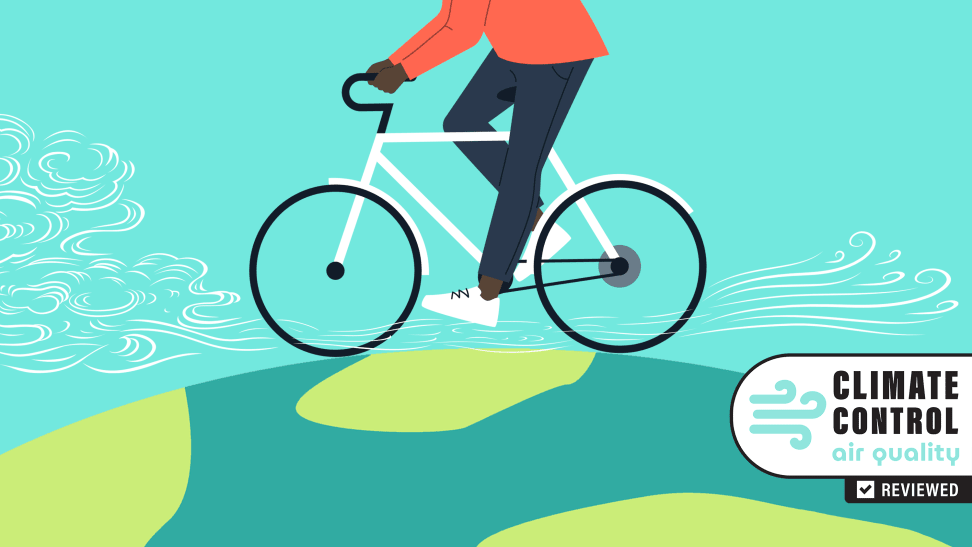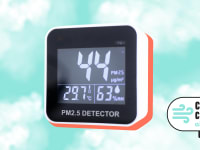4 easy things you can do to reduce greenhouse gas emissions
Cut down on air pollution with these tips.
 Credit:
Reviewed / paul_june / ina9 / nadia_bormotova
Credit:
Reviewed / paul_june / ina9 / nadia_bormotova
Products are chosen independently by our editors. Purchases made through our links may earn us a commission.
Check out the entire Climate Control series to protect your home from the effects of climate change
Air pollution is slowly getting worse, and while we know that things like our reliance on gasoline-powered automobiles and greenhouse gasses are contributing factors, climate change is also contributing to worsening pollution, which in turn, contributes to an increase in health issues, allergies, and things like higher-risk pregnancies.
What is greenhouse gas emissions
Greenhouse gasses are so named because they trap heat within the Earth’s atmosphere, much like a greenhouse does. As you can imagine, this causes warming effects.
There are several types of gasses that can be categorized as a greenhouse gas. They absorb energy and slow the rate at which the energy escapes to space. Greenhouse gasses include carbon dioxide, which accounts for nearly 80% of all greenhouse gas emissions, as well as methane, nitrous oxide, and fluorinated gasses.
The result of these emissions is an effect much like wrapping a blanket around the Earth: retained heat that creates a global warming effect.
What causes greenhouse gas emissions?
The primary cause of greenhouse gas emissions is humans. Most of these greenhouse gasses exist in small measures naturally in the atmosphere, but since the dawn of industry and mass transportation, their presence has skyrocketed.
According to the EPA, “the combustion of fossil fuels such as gasoline and diesel to transport people and goods was the largest source of carbon dioxide emissions in 2020, accounting for about 33% of total U.S. carbon dioxide emissions and 26% of total U.S. greenhouse gas emissions.”
Also contributing to greenhouse gas emissions is electricity usage and agricultural practices, including the raising of livestock and land management that employs synthetic fertilizers.
Essentially, many of the common practices we employ on a daily basis, from driving to work to grilling our steaks for dinner to our reliance on industries that produce and burn fossil fuels are incrementally contributing to climate change every day.
The situation seems like a never-ending (and often depressing) cycle, but before we get to a point of no return, there are plenty of small steps we as individuals can take to reduce our own output of harmful emissions.
Tip 1: Be conscious of and flexible with your transportation
America is a car culture and, despite the fact that many of us are able to work remotely, the majority of Americans are still reliant on their cars for work, school, travel, and everyday errands.
Transportation is, not surprisingly, the number one cause of greenhouse gas emissions in this country, and while a recent Executive Order signed by President Biden set a non-binding target of making 50% of passenger cars and light-duty trucks zero emission vehicles by 2030, there are still a number of things we can do before then to help.
If you’re in the market for a new vehicle, consider an electric model, a hybrid, or an advanced diesel automobile to reduce your fuel consumption.
If you don’t plan to switch from a traditional gasoline-powered vehicle, take care to make sure your tires are properly inflated, as low tire pressure affects your fuel economy. Make sure you get your car inspected routinely to ensure it’s running efficiently.
In addition, try to reduce car travel as much as possible by walking, biking, or taking public transportation if available, or carpool if that’s an option.
Tip 2: Get smart about temperature, energy, and air quality at home
There are so many ways you can reduce your greenhouse gas emissions at home. It’s almost an exciting challenge to see just how many things you can do to help the Earth and the air by simply being aware of your habits and power use.
Temperature control
First, be aware of temperature. By this I mean three things: turn down the heat on your thermostat (and install a programmable thermostat to maintain consistent temperatures in the house); turn your water heater to 120°F; don’t keep your fridge and freezer temperatures set too low.
To help maintain your home’s temperature, make sure it’s properly insulated and sealed, too.
Energy sources
In an effort to reduce your carbon footprint, Anthony Wexler, a distinguished professor of Land, Air, and Water Resources department at the University of California, Davis, says that when you are considering your energy sources, you should “put solar on your roof, and, when you’re buying electricity from the power company, buy the green energy, don’t buy the regular energy. [You should also] minimize your use of natural gas.”
Consider installing Energy Star-rated appliances, LED light bulbs, and make sure you turn them off when you’re not using them.
You can also switch to a laptop computer, which uses far less energy than a desktop.
Clean air
When talking about being cognizant of the air quality in the home, you should take note of any warnings about the chemicals you use.
Volatile organic compounds (VOCs), which contribute to ground-level ozone, are found in many common household supplies, like paints and paint thinners, cleaning solvents, dry cleaning chemicals, cigarette smoke, and even some cosmetics.
When possible, choose no or low-VOC products at home to reduce your exposure.
Consider composting mulch, leaves, and brush, rather than burning them, which can contribute to particle pollution.
(Food waste, as we will mention below, can also be composted rather than sent to the landfill to lessen the emissions of greenhouse gasses.)
Tip 3: Eat with the planet in mind, and waste less food
It’s crazy to think that what we eat might also affect how we breathe, but in a “circle of life” kind of way, it’s all connected.
For years, scientists have explained how agricultural emissions like methane, which is produced by cows, buffalo, and sheep, contribute to greenhouse gasses, and how reducing our consumption of those meats would benefit the environment.
While many environmental advocates support a vegan diet, simply reducing the amount of red meat one consumes can help, too.
Another solution is to simply eat more locally. The farther food has to travel, the more it contributes to air pollution, so by choosing to buy food grown and raised within your own community, it’s a small and essential step toward reducing the amount of pollutants released into the air.
Don’t waste your food. No one spends $50 on organic produce with the goal of throwing it away, but the simple truth is that many of us don’t store our food properly, or don’t eat it fast enough, and we end up throwing away what would have been a perfectly good meal because it went bad.
On a global scale, we throw away one-third of all the food that’s grown, which represents a massive amount of organic matter that turns to methane in the landfill, not to mention the waste of resources used to grow the food we toss.
Meal planning, freezing or canning produce, and keeping a fridge inventory so you don’t over-buy are small ways to ensure that what you buy stays fresh and is used before it becomes food waste.
Tip 4: Vote for change
Wexler, who is a professor as well as the director of University of California, Davis’s Air Quality Research Center, stated, “The most important thing you can do is vote for candidates who care about climate change. It’s not a very scientific answer, but it’s the most important thing.”
Improving air quality is just one of the benefits of taking these steps to reduce greenhouse gasses and carbon emissions.
If we all commit to making small changes, our contributions will add up. As they say, “progress, not perfection;” we’ll never be able to make anything perfect, but with some effort, we can try to make incremental changes for the better.
The product experts at Reviewed have all your shopping needs covered. Follow Reviewed on Facebook, Twitter, Instagram, TikTok, or Flipboard for the latest deals, product reviews, and more.
Prices were accurate at the time this article was published but may change over time.


